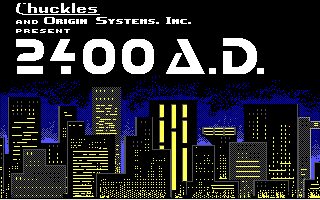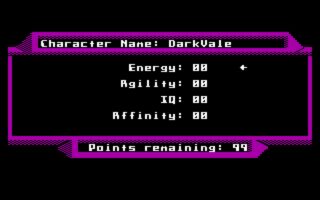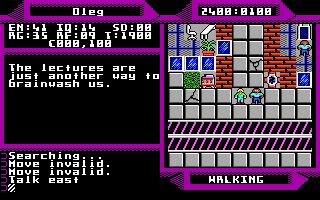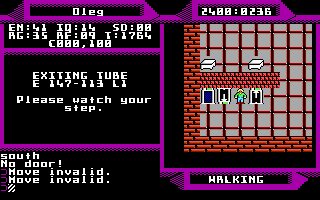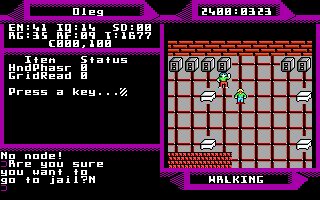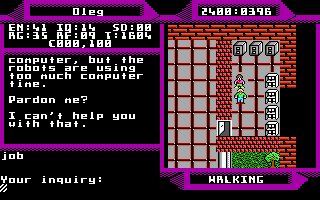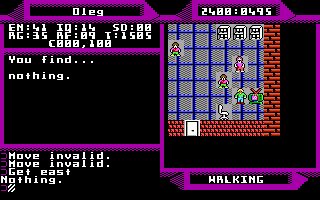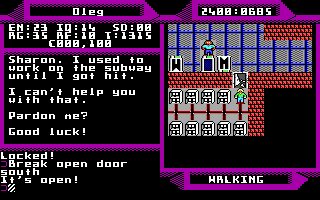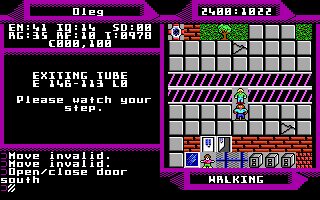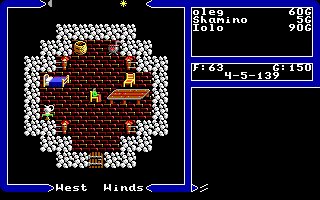2400 A.D. is a post-apocalyptic top-down role-playing game by Origin Systems.
Before starting a new game, I have the (maybe bad) habit of looking at the story of searching for a review. Like some games from that time, I knew 2400 A.D as an adult. When I found out a little about it, I discovered that it involved an alien invasion, espionage, robots, and the mission of saving humanity, so naturally, I got excited. When I started the adventure, I remembered why I had stopped getting enthusiastic about games before starting them.
The game is an RPG designed by Chuck Bueche and published by Origin Systems. The entry was available in 1988 for Apple II and MS-DOS; a few years later, a port to Commodore 64 and a sequel called 2500 A.D (they were not creative neither for the name) was canceled due to its few sales. Legendary programmer John Romero was working on the C64 version before it was canceled!
As I anticipated before, the pretentious plot is about an extraterrestrial invasion of a tyrannical robotic race called Tzorgs. The protagonist, who was an ordinary citizen before the Metropolis city was attacked, and he joined the resistance, must save the enslaved humans and return peace to Metropolis. Thus, it quickly becomes clear that the game's ultimate goal is to destroy the central robot station and save the human race.
The gameplay is quite simple. The character must interact with the environment and its inhabitants to obtain several items and apparently solve puzzles. Emphasis on "apparently" since the few that appear are ridiculously easy and seem to be made just to justify some gameplay. Regarding the action, it is also present. There is not much to say besides that the character must aim and attack the enemy with different weapons and items that will be buying.
The audiovisual part of the game is... special, and at this point, you must imagine that this can not be a good thing. First of all, the camera has an aerial perspective, and the colors seem to be chosen randomly, prioritizing the greys for their futuristic tint. After that, the colors seem to be randomly chosen by an elementary school kid taking his first steps in Paint. Besides, the lack of animation in the characters hardly goes unnoticed and, combined with the above, makes the title boring and uncomfortable to watch. Similarly, the worst catastrophe of the adventure is in sound design. The developers decided to use ambient sound mixed with some generic sound effects that I think are typical of old broken phones.
It may seem very hard with a 1988 title, but one should not forget that even though the era had its limitations, games like Metal Gear or Final Fantasy had come out a year earlier. Anyway, if someone wants to give it a chance, they should have a go, it's not an unplayable game, and it's the only good thing I can highlight. And, taking into account some titles that came out at the time, saying that is already a great achievement.

